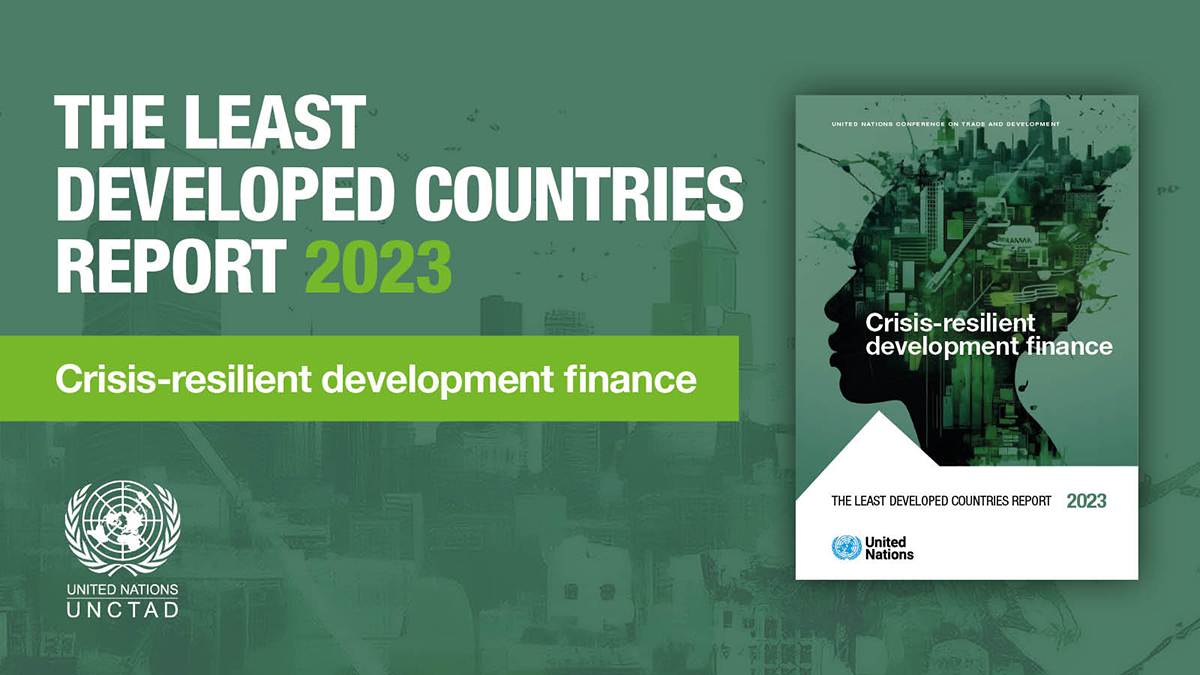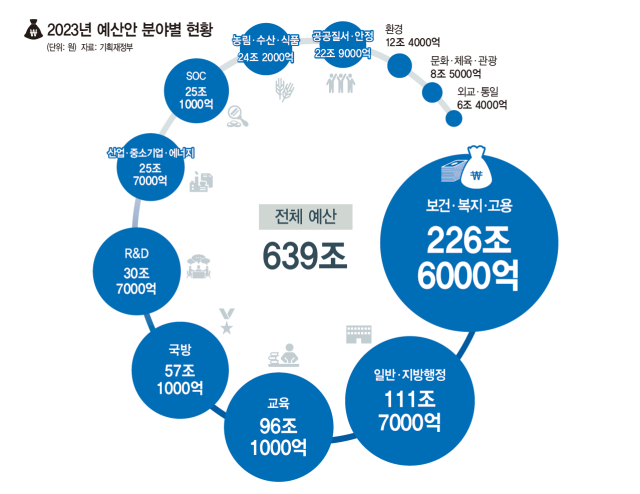Building Resilience In Least Developed Countries: A Pathway To Sustainable Transformation

Table of Contents
Strengthening Institutional Capacity and Governance
Good governance, transparency, and accountability are the cornerstones of resilient societies. Without strong institutions, LDCs struggle to effectively manage resources, respond to crises, and implement development policies. Building resilience requires a fundamental shift towards more participatory and inclusive governance models.
-
Promoting participatory governance models: Engaging civil society, local communities, and marginalized groups in decision-making processes ensures that policies are relevant and effective. This includes promoting free and fair elections, protecting freedom of speech, and establishing independent oversight bodies.
-
Investing in capacity building for government officials and civil servants: Training programs focused on leadership, financial management, and policy development are crucial for strengthening institutional capacity. This includes access to modern technology and information systems to improve efficiency and transparency.
-
Strengthening anti-corruption measures: Corruption diverts resources away from essential services and undermines public trust. Implementing robust anti-corruption frameworks, promoting transparency in public procurement, and strengthening the rule of law are essential for building resilience.
-
Improving data collection and analysis for informed decision-making: Access to reliable and timely data is critical for evidence-based policymaking. Investing in statistical capacity and developing robust data management systems are crucial for effective governance.
-
Implementing effective risk management frameworks: Proactive risk assessment and planning are crucial for mitigating the impact of future shocks. This includes developing early warning systems for natural disasters, economic downturns, and health crises.
Investing in Human Capital and Social Protection
Human capital—the skills, knowledge, and health of a population—is a vital ingredient for resilience. Investing in education, healthcare, and social safety nets empowers individuals and communities to withstand shocks and adapt to change.
-
Improving access to quality education, focusing on skills development for future employment: Education equips individuals with the skills and knowledge needed to participate in the economy and contribute to development. This includes providing access to vocational training, technical education, and higher education opportunities.
-
Expanding access to affordable and quality healthcare services: Good health is essential for productivity and resilience. Investing in healthcare infrastructure, training healthcare professionals, and implementing disease prevention programs is crucial.
-
Implementing robust social protection programs (e.g., cash transfers, unemployment benefits): Social safety nets provide a crucial buffer against economic shocks and hardship, particularly for vulnerable populations. These programs help to ensure basic needs are met and reduce poverty.
-
Promoting gender equality and empowering women: Empowering women through education, access to resources, and participation in decision-making processes strengthens communities and improves resilience.
-
Investing in nutrition and food security: Malnutrition weakens individuals' and communities' ability to withstand shocks. Investing in food security programs, promoting healthy diets, and improving agricultural practices are vital for building resilience.
Diversifying Economies and Promoting Sustainable Development
Economic diversification is key to reducing reliance on vulnerable sectors and improving resilience to external shocks. LDCs often heavily depend on a few primary commodities, making them susceptible to price fluctuations and global market volatility.
-
Promoting sustainable agriculture and climate-smart agriculture practices: Agriculture is a vital sector in many LDCs. Investing in sustainable agricultural practices, improving water management, and promoting climate-resilient crops can enhance food security and livelihoods.
-
Developing the private sector and fostering entrepreneurship: A vibrant private sector creates jobs, generates economic growth, and enhances resilience. Support for small and medium-sized enterprises (SMEs) through access to finance, training, and business development services is crucial.
-
Investing in renewable energy and green technologies: Transitioning to renewable energy sources reduces dependence on fossil fuels and enhances energy security. Investing in green technologies creates jobs and promotes sustainable development.
-
Improving infrastructure (transportation, communication, energy): Reliable infrastructure is essential for economic growth and resilience. Investments in transportation, communication, and energy networks can facilitate trade, improve access to services, and enhance disaster response.
-
Promoting fair trade practices and access to global markets: Fair trade policies ensure that LDCs receive fair prices for their exports and have greater access to global markets.
Enhancing Climate Change Adaptation and Disaster Risk Reduction
LDCs are highly vulnerable to the impacts of climate change, including droughts, floods, and extreme weather events. Building resilience requires investing in climate change adaptation and disaster risk reduction measures.
-
Investing in early warning systems and disaster preparedness: Early warning systems provide crucial time for communities to prepare for and respond to disasters. Investing in disaster preparedness training and infrastructure can significantly reduce the impact of disasters.
-
Developing climate-resilient infrastructure: Building infrastructure that can withstand the impacts of climate change is crucial for protecting lives and livelihoods. This includes designing buildings, roads, and other infrastructure to withstand extreme weather events.
-
Promoting climate-smart agriculture and water management techniques: Adopting climate-smart agricultural practices can help farmers adapt to changing climate conditions and enhance food security. Improved water management techniques can ensure access to water for agriculture and other uses.
-
Implementing community-based adaptation strategies: Engaging local communities in adaptation planning and implementation ensures that strategies are locally relevant and effective.
-
Strengthening international cooperation on climate change mitigation and adaptation: International cooperation is essential for addressing the global challenge of climate change. This includes sharing knowledge, technology, and financial resources to support adaptation efforts in LDCs.
The Role of International Partnerships and Development Assistance
International partnerships and effective development assistance are critical for supporting resilience-building efforts in LDCs. Increased and well-coordinated funding, aligned with national priorities, is paramount.
-
Increased funding for resilience-building initiatives: Significant financial resources are needed to support the implementation of resilience-building strategies. Donor countries and international organizations must increase their commitment to funding these initiatives.
-
Effective coordination among donors and international organizations: Coordination among donors and international organizations is essential to avoid duplication of efforts and ensure that aid is used effectively.
-
Alignment of aid with national priorities and development plans: Aid should be aligned with national development plans and priorities to ensure that it contributes to the achievement of national goals.
-
Emphasis on knowledge sharing and capacity building: International partnerships should focus on sharing knowledge, expertise, and best practices to support capacity building in LDCs.
Conclusion
Building resilience in Least Developed Countries requires a holistic and multi-sectoral approach that addresses the interconnected challenges of governance, human capital, economic development, and climate change. Strengthening institutional capacity, investing in human capital and social protection, diversifying economies, and enhancing climate change adaptation are all crucial components of a comprehensive strategy. The role of international partnerships and effective development assistance cannot be overstated. Investing in building resilience in Least Developed Countries is not merely a humanitarian imperative, but a strategic investment in global stability and sustainable development. Let's work collaboratively to strengthen the adaptive capacity of these nations and pave the way for a more prosperous and secure future. Join the global effort to build resilience in Least Developed Countries and contribute to a more equitable world.

Featured Posts
-
 John Wick 5 Keanu Reeves And The Future Of The Franchise
May 07, 2025
John Wick 5 Keanu Reeves And The Future Of The Franchise
May 07, 2025 -
 Papal Election A Comprehensive Look At The Conclave Process
May 07, 2025
Papal Election A Comprehensive Look At The Conclave Process
May 07, 2025 -
 Wynns New Seafood Restaurant Plans Finally Unveiled
May 07, 2025
Wynns New Seafood Restaurant Plans Finally Unveiled
May 07, 2025 -
 Trots Konflikt Nhl Vill Ha En Ny Stoerre Turnering
May 07, 2025
Trots Konflikt Nhl Vill Ha En Ny Stoerre Turnering
May 07, 2025 -
 Exclusive New Terms For Federal Oversight Of Columbia University Unveiled By Trump Administration
May 07, 2025
Exclusive New Terms For Federal Oversight Of Columbia University Unveiled By Trump Administration
May 07, 2025
Latest Posts
-
 Understanding Bitcoins Rebound Risks And Opportunities
May 08, 2025
Understanding Bitcoins Rebound Risks And Opportunities
May 08, 2025 -
 2024
May 08, 2025
2024
May 08, 2025 -
 The Bitcoin Rebound Signs Of A Lasting Recovery
May 08, 2025
The Bitcoin Rebound Signs Of A Lasting Recovery
May 08, 2025 -
 Could Bitcoin Reach New Heights A 1 500 Growth Forecast
May 08, 2025
Could Bitcoin Reach New Heights A 1 500 Growth Forecast
May 08, 2025 -
 Analyzing Bitcoins Rebound Potential For Future Growth
May 08, 2025
Analyzing Bitcoins Rebound Potential For Future Growth
May 08, 2025
